13 Interesting Chile Facts For Kids
Chile, known as “the land of poets,” is a long, narrow nation that borders the Pacific Ocean and is located on South America‘s western coast. The coastline stretches over 4,000 miles and is about 70 miles wide. You can travel the entire length of Chile by car. Most of Chile is mountainous, and the Andes Mountains form their eastern border. Santiago is the country’s largest and capital city.

The Pacific Ocean encircles Chile on its western side. It possesses the world’s most extended seacoast of any nation. To the north and east are Bolivia, Argentina, and Peru. Chile claims a portion of Antarctica. It also governs several South Pacific islands, notably Easter Island.
With mild temperatures, Chile’s northern region is a desert. The country’s center experiences warm, dry summers and chilly, wet winters. It’s cold and rainy in southern Chile.
13 Fascinating Chile Fun Facts For Kids:
1. The second-largest swimming pool is in Chile; this pool in the world by area was listed in the Guinness Book of World Records.
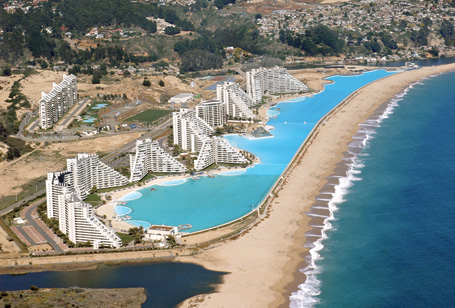
Image Source – https://teachingkidsnews.com/
The San Alfonso del Mar Resort is home to the second-largest swimming pool in the world. It is a kilometer long, 8 hectares in size, and has 250 million liters of water!
The annual maintenance cost is about $54 million, while the construction cost is roughly $1 billion. In the 35 m/115 ft deep lagoon pool, even boats can move.
2. Chile’s fascinating cultural traditions: The Whole Community Helps Move Your House on This Chilean Island
The Minga, one of Chile’s most intriguing cultural practices, is practiced on the islands of the Chiloe archipelago. When a family wants to move their home, the community band together to pull the wooden structure out from under its foundation and pull it to its new location with a team of oxen and bullocks, or they tie it to a boat and gently float it to a different island.
3. The Chilean Plateau looks Like Mars inside the Atacama Desert and is a landscape of extraordinary natural beauty.
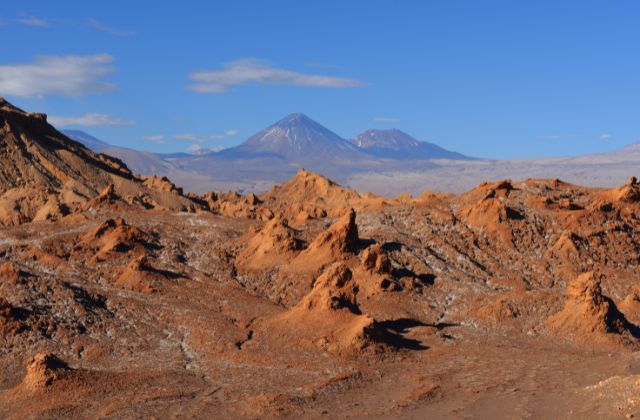
The Atacama Desert in Chile resembles Mars and is the driest spot on earth, with an extraordinarily inhospitable environment. Some areas have not had a drop of rain, and the desert, which has been continually hyperarid for at least 3 million years, is likely the oldest desert on Earth. A 1000 km long stretch of land connecting the Pacific Ocean and the Andes mountains is where it travels.
4. Santiago has been the capital city of Chile since colonial times.
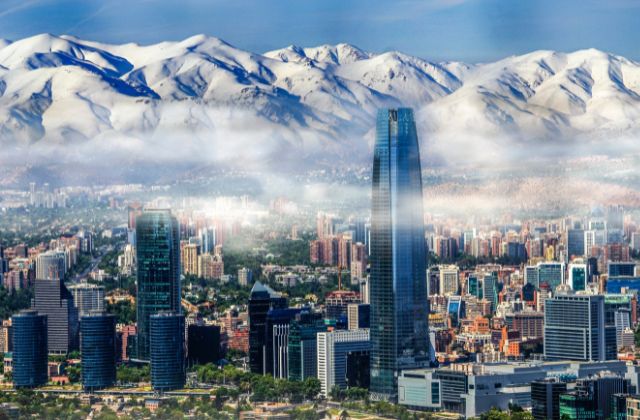
Santiago, founded in 1541, has served as Chile’s capital throughout the country’s colonial era. Santiago is home to over a third of the nation’s 18 million residents. With a rise of 200% since the 1960s, Santiago has become one of the cities in the world with the quickest growth. The Santiago metro area is home to almost 7 million people. Valparaiso and Concepcion are two other major cities in Chile. Central Chile is home to three out of every four Chileans in the region between Copiapo and Conception. Eighty-five percent of Chileans reside in urban areas.
5. Chile has some almost extinct animals.
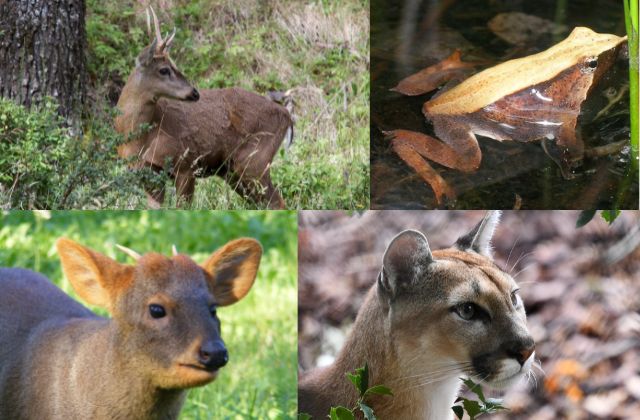
The national animal, the huemul, the pudu, and the puma are just a few of the nearly extinct and endangered species that may be found in Chile. Since pumas hunt primarily at night, sightings are uncommon. They are mountain dwellers of Chile. The southern Chilean woodlands are home to the pudu, which are a type of deer. In Chile’s forests, streams are home to the small Darwin’s frog. These frogs develop inside the mouths of their fathers! Off the coast of southern Chile, one can view Macaroni Penguins and Blue Whales.
6. Do you know that Chile has experienced thousands of earthquakes, leaving thousands homeless and impacting more than 2 million people?
In Chile, there are around 3,000 volcanoes, and 36 of them are active. Chile has frequent earthquakes. Did you know that on May 22, 1916, Chile experienced the most violent earthquake ever recorded? It lasted 11 minutes, had a magnitude of 9.5 on the vector scale, and killed at least 6,000 people. The enormous Chilean earthquake is the name given to it.
7. The Gran Torre, the highest building in Latin America with 64 stories and six basement floors, is located in Santiago, Chile.
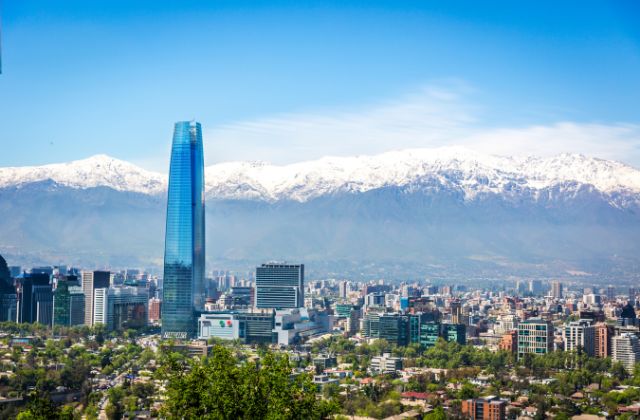
The Gran Torre in SA, which has 64 stories and two observation decks on its top two floors with breathtaking views of the city and its surrounds, is the tallest structure in Chile. Gran Torre is Spanish for “large tower.” The Costanera Center, Pablo Neruda’s residence, and the well-known Parque Arauco are all nearby.
8. The massive moai statues that were sculpted by native people on Eastern Island, a UNESCO World Heritage Site, are its most well-known attractions.
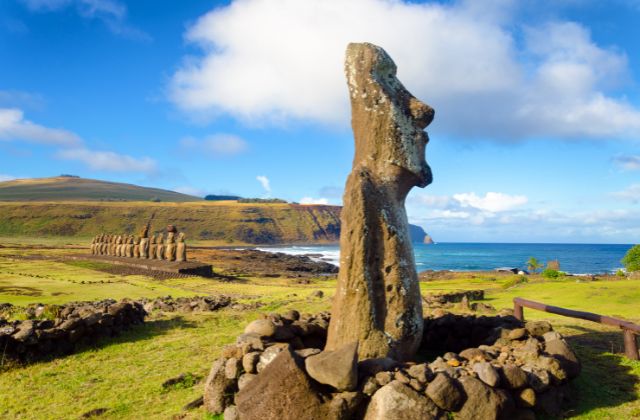
Eastern Island is Chilean territory making it one of the most well-known places on earth. It is one of the most distant inhabited islands, the closest being about 2000 kilometers away. The Rapa Nui nation originally resided on the island but wiped out the entire civilization due to overcrowding and deforestation. The majestic statues known as moai are also found on the Easter Islands,
9. Because of Chile’s highly regarded poetry culture, the expression “land of poets” is frequently used to describe the country, making you fall deeply in love.
Chile is popularly referred to as the “land of poets” by its citizens. This is due to its long and revered legacy of poetry. The statement is most frequently connected with the fact that two of Chile’s most well-known and adored poets, Gabriela Mistral in 1945 and Pablo Neruda in 1971, twice won the Nobel Prize for Literature for their works.
10. Wine and Bread in Chile
Just after the Germans, Chileans are the world’s second-largest bread consumers—no surprise given how good the various loaves of bread are, including the well-known Marraqueta Loaves. Not just any wine, but some of the greatest and finest range of wines have been made in Chile since the first wine grapes were planted in the country in 1554, imported by the Spanish. Chile is the fifth largest supplier of wine and the ninth largest producer.
11. Chileans are patriotic punch and love to celebrate. On September 18, 1810, Chile proclaimed its independence from Spain. The “Fiestas Patrias” commemorates the events surrounding the fight for freedom.
Chileans love to rejoice and are very patriotic. The nation came together to seek freedom from Spanish tyranny on September 18, and on September 19, on this day of the army’s glory, Chileans threw a fiesta that could not be missed.
These fiestas feature parades, dancing, partying, traditional Chilean food, and displays of patriotism. Huasos, the country’s iconic cowboys, are frequently featured in these parades. Many businesses and schools will announce a week-long holiday.
12. Flora and Fauna
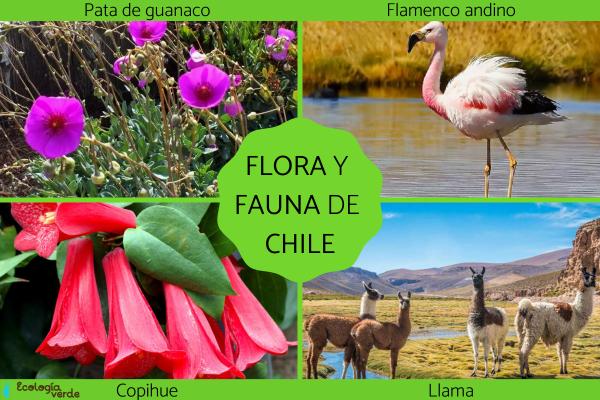
Image Source – https://www.ecologiaverde.com/
Chile’s vegetation differs significantly from its northern to its southern regions. The northern desert has less flora growing there. On the north coast, cacti and thorny bushes are common. Central Chile is home to hardwood trees, bushes, cacti, and green grass, though many of the original species have been replaced by cropland. The south is covered in dense forests of Chile pines, beech trees, and evergreens. Chile’s wildlife is less varied than that of other South American nations. Animal migration into Chile is impeded by the Andes Mountains and the desert in the north. The northern Andes are home to four camels, including guanacos, llamas, alpacas, and condors. Deer, wolves, pumas, wildcats, rodents, and condors are some.
13. Chile is one of the few nations with a government-supported UFO research organization.
Chile is one of the few nations on Earth with a government-backed UFO study group. The radar and aircraft cases committee for the study of anomalous aerial phenomena. Given that Chile is one of the world’s top locations for UFO sightings, this would not be all that surprising.
Final Thoughts:
Chile is not just one of the skinniest or narrowest countries on Earth but also the longest. Mestizos, or people with mixed Spanish and Native American heritage, make up most Chileans. White people and Araucanian Indians are found in smaller clusters. Approximately 28% of Chileans are under the age of 15. The majority of the population is Roman Catholic and speaks Spanish. Chileans consume a lot of seafood, including salmon, prawns, octopus, tuna, and bacalao (codfish). There are many entertaining sports and games to play in Chile.
